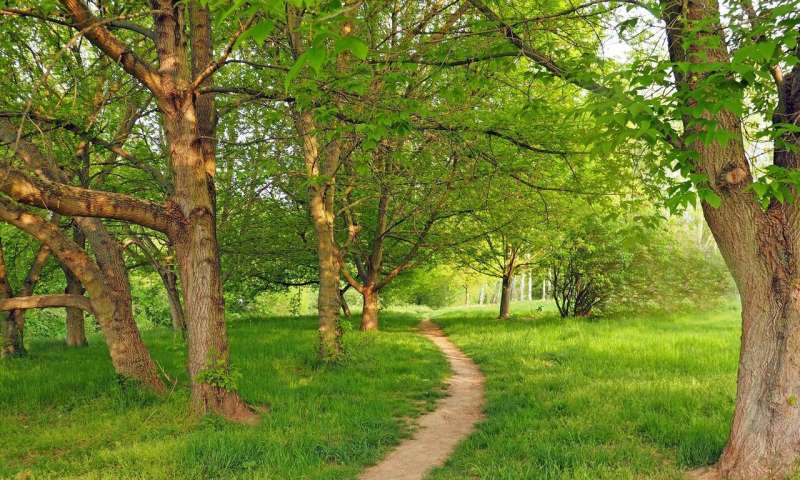August 28, 2019 report
Model: Drastic ash tree dieback in U.K. unless breeding program instituted

Matthew Evans, a biology professor at the University of Hong Kong, has created a computer model that shows the likely impact of dieback disease on ash trees in the U.K. In his paper published in the journal Royal Society Open Science, he describes the model and what he believes resource managers can do to reduce the loss of trees.
Ash dieback disease is caused by the fungus Hymenoscyphus fraxineus—infections result in stretched-out, diamond-shaped scars on tree trunks, leaf loss and crown dieback. It tends to kill young ash trees in short order—older trees die after several seasons. Ash dieback disease was first seen in in Poland in 1992. After that, it spread across many parts of Europe and made its way to Britain in 2012. Since that time, it has been slowly killing one of the most abundant trees in the U.K. Prior research has shown that approximately 1 percent of ash trees are immune to dieback infections, suggesting the trees might survive if left alone. In this new effort, Evans created a computer model to predict whether this might be the case.
The model shows that over the course of a century, ash dieback disease would destroy most of the ash trees in Britain (approximately 95 percent)—but not all. He suggests that it is possible the trees could survive the fungal invasion, but also that breeding programs could prevent such devastation. He notes that the reason the immune trees would not simply take over those that are not immune is partly because of the way they reproduce—they produce seeds that drop from the tree as little helicopters, which are carried to distant places by the wind. But the trees they produce have only a 50-50 chance of immunity to the fungal disease because the other parent would likely not be immune. Evans suggests breeding programs that ensure both parents are immune to the disease could prove to be beneficial by increasing the population of immune trees much more quickly than would happen naturally.
More information: Matthew R. Evans. Will natural resistance result in populations of ash trees remaining in British woodlands after a century of ash dieback disease?, Royal Society Open Science (2019). DOI: 10.1098/rsos.190908
Journal information: Royal Society Open Science
© 2019 Science X Network
















